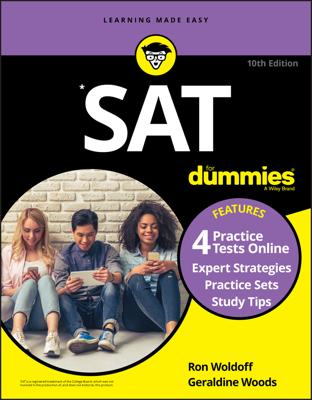It’s too late to devise (plan, invent) a guessing strategy when you’re taking the PSAT/NMSQT. So do it now, get comfortable with it, and follow your strategy faithfully. Here are the essential facts:
Many test-takers don’t have enough time to answer every question.
The PSAT/NMSQT gives you one point for every correct answer.
You receive no points for questions you leave blank.
You lose a quarter point for every wrong answer to a multiple-choice question.
You lose no points for an incorrect grid-in response.
With these facts in mind, your strategy is clear:
Answer all the questions you know. As you work through a section, some questions pop up, wave their hands, and scream, “Answer me! You know me! I’m your friend!” Be sure to pace yourself so that you garner (gather) all those points.
Mark any questions that stump you. In the margin, circle the question number or write a check mark () or some other symbol. Consider using two check marks () or a special symbol for extra-tough questions.
If you have time, return to the questions you skipped. Avoid the really hard questions unless you’re well supplied with extra minutes.
Eliminate any multiple-choice options that are clearly wrong. Think of this step as a process of elimination.
Guess if you’ve eliminated one or more choices. Do the math: If you cross off one multiple-choice answer, you have four left, which gives you a one-in-four chance of guessing correctly. Because you lose a quarter point for a wrong answer, you have even odds of guessing correctly. If you can eliminate two answers, your odds of guessing correctly are better still.
Don’t skip grid-ins. Because you don’t lose points for incorrect grid-in answers, try to answer every one of them, unless you’re totally clueless about the problem and you need extra minutes for questions you may know something about.
Based on statistical evidence — how average test-takers do on a particular question — the test-makers place sentence completions, writing, and math questions in order of difficulty. (The critical reading passage-based questions are different; there, the questions follow the order of the passage itself.)
In the order-of-difficulty sections, the easier stuff is at the beginning, so you should try to answer everything that shows up early in a section — the first ten questions, perhaps. That said, everyone’s mind works differently. You may find Question 24 painless but be stumped by Question 12. If you think you know an answer, bubble it in.
But if you see something confusing at the end of a section and you’re running out of time, you may do better if you return to the beginning of the section and fill in answers you skipped the first time through rather than grapple with a super-tough problem you’re less likely to answer correctly.

